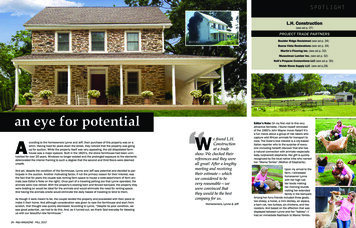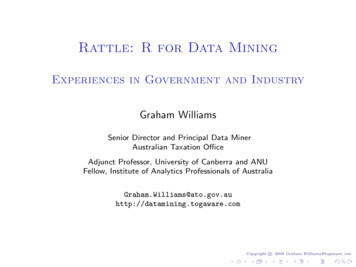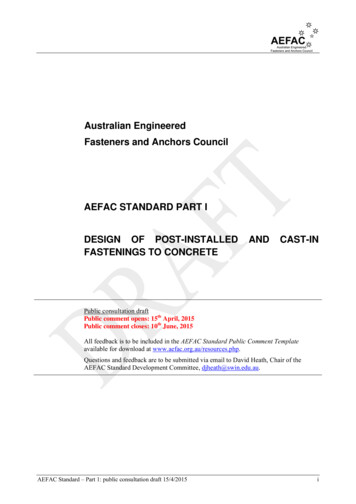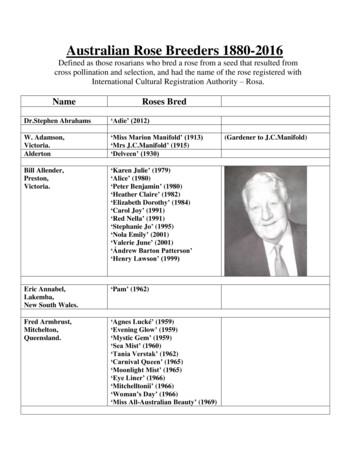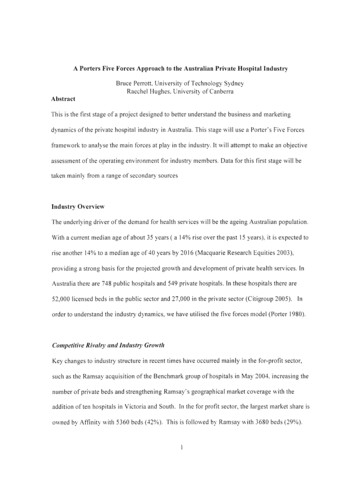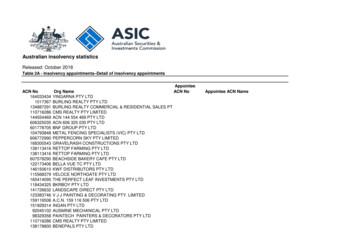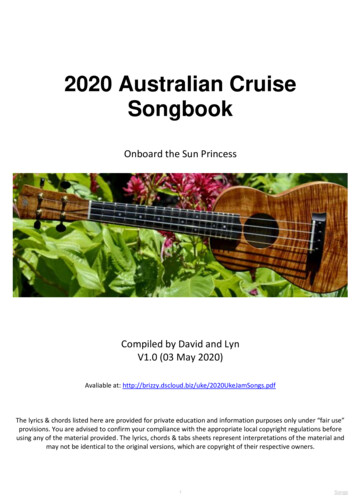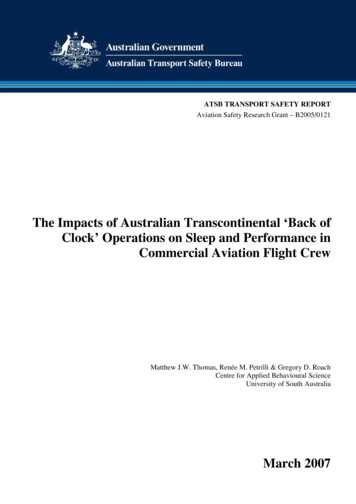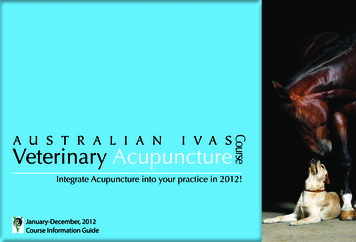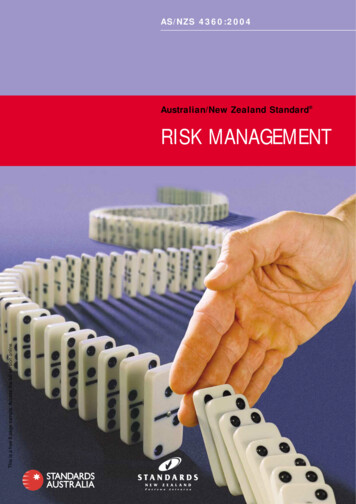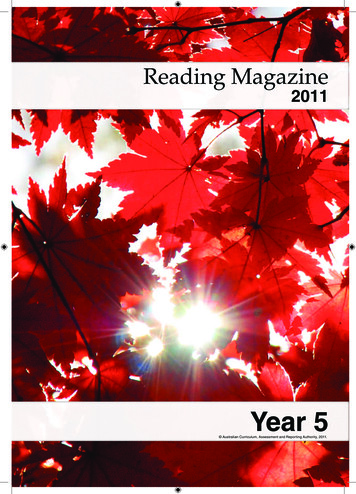
Transcription
Reading Magazine2011Year 5 Australian Curriculum, Assessment and Reporting Authority, 2011.
From pop bandto movie starJohnny Depp is the actor who plays Willy Wonka in themovie, Charlie and the Chocolate Factory. With his goodlooks and unusual sense of humour, Johnny has becomeone of the biggest names at the box office, but did youknow that he started his career in a pop band?Johnny taught himself to play guitar when he was twelveyears old. Soon afterwards he formed a band called Flame.The band wrote their own music and practised in a garage.Johnny designed the band’s costumes – many were madefrom old clothes found in his mother’s wardrobe.By the time Johnny was sixteen, Flame had changed itsname to The Kids and the band was playing gigsaround America. The Kids workedhard for six years but they did nothit the big time.It was only after meeting theactor Nicolas Cage thatJohnny decided to try acting.The rest, as they say, is history.But Johnny still finds time formusic – he has recentlyplayed guitar on the albumof his musician girlfriend,Vanessa Paradis.Johnny Depp inCharlie and theChocolate Factory2
How to playSPUDWhat you needSetting up a playing areaAim of the game five or more players a soft rubber ball a clear space outsideChoose trees, fences,footpaths or buildingsto mark the edges of aplaying area.To be the last player inthe game. (You are outas soon as you spell theword SPUD.)Rules of the game1. Pick a player to start with the ball. Theplayer with the ball is called It.2. It stands in the middle of the playing areawith the ball. All the other players gatheraround.3. It tosses the ball into the air, and callsanother player’s name. This player is now Itand has to get the ball. Everyone else runsaway.4. It yells ‘SPUD!’ as soon as It gets the ball.Everyone else has to freeze.5. Then It takes three giant steps towardsanother player, and throws the ball at thatplayer’s feet. The other player must notmove, even if there’s a chance of being hitby the ball.6. If It hits the other player, or if that playermoves, then the player gets a letter (S first),and becomes It.If It misses, then It gets a letter andstays It.7. The first letter for a player who is hit isS, the second letter is P, and so on. Anyplayer who has spelled S-P-U-D is out.The winner is the last player in the game.3
2009Young adventurerRiders at the Naadam festival horseraces.Angus is the rider in green.Thirteen-year-old Angus Paradice lives on a farm in New SouthWales. In 2008, he travelled with his family on holiday to Asia.In Mongolia, he saw the famous Naadam festival horseraces.All of the jockeys were children. Angus wanted to race too, so hedecided to enter the 2009 competition.After he returned to Australia, Angus trained for the long distancecompetition by riding 22 kilometres after school each day and byrunning and doing sit-ups.In 2009, Angus returned to Mongolia. Some of his Mongolianfriends arranged for him to ride in a 10 kilometre race fortwo-year-old horses, and a 15 kilometre race for five-year-oldhorses. Although he had a bad fall before the races, Angusfinished in the top 10 in both events.His efforts won him the 2009 Young Adventurer of the Year Award.4
The diverI put on my aqua-lung and plunge,Exploring, like a ship with a glass keel,The secrets of the deep. Along my lazy roadOn and on I steal –Over waving bushes which at a touch explodeInto shrimps, then closing, rock to the tune of the tide;Over crabs that vanish in puffs of sand.Look, a string of pearls bubbling at my sideBreaks in my hand –Those pearls were my breath! . Does that hollow hideSome old Armada wreck in seaweed furled,Crusted with barnacles, her cannon rusted,The great San Philip? What bullion in her hold?Pieces of eight, silver crowns, and bars of solid gold?I shall never know. Too soon the clasping coldFastens on flesh and limbAnd pulls me to the surface. Shivering, back I swimTo the beach, the noisy crowds, the ordinary world.Ian Serraillier5
The outsiderOn an Arctic island long ago, a stranger is approachinga village.“Papa,” I yell. “Someone is coming.”Papa gathers Uncle and the other men. They cometo stand beside Finn, Tuaq and me in a show ofcommunal strength.“He must be from one of the groups that havealready arrived at the coast,” Uncle suggests.Papa nods. He doesn’t take his eyes off theapproaching figure.“Get Nana,” he tells Miki.If the man wants to stay, Nana will decide. She’salready walking towards us, wearing her priestesscape trimmed with raven feathers and arctic fox fur.“Hullo-o-o,” the man calls into the wind.Papa waits until he can see the stranger’s eyes.The man is not from any villages we join with on thecoast.“Good morning,” Papa says cautiously.“I am Hulag,” the man responds.Papa doesn’t say his name. Instead he nods inNana’s direction. “This is Ananaksaq.” Nana is famousthroughout the icelands and Papa is reminding Hulaghow powerful our village is.“It’s an honour to meet you.” Hulag’s eyesmeasure Nana up and down. He doesn’t lookimpressed. His grin says he thinks it will be easy tocharm this old woman with an oil-stained parka anddirty face.Papa leads, but Nana decides, and she has madeher first decision. This man must wait out in the cold.6
I’m a walking advertisementFor a school assignment, Sally wrote this argument about advertising.When I look at myself, what do I see? Most of my clothing these days carries acompany logo. There’s my T-shirt with its brightly coloured stamp, my sunglasses,my cap, my jeans and my shoes, all carrying an identifying mark. There’s evenadvertising on my underwear.The worst thing is that every logo is immediately recognisable as the sign of theclothing company. Each one is a promotion. Sometimes it’s only a small and barelynoticeable icon, a well-designed little shape on the front of a shirt. But it still letseveryone know who made it – and how much it cost. More often, though, that new‘must-have’ shirt carries a whole chestful of the company’s mark. The ad is so largeit can’t be missed. It’s a huge statement that these clothes are admirable so thewearer must be admirable too.So why do we do it? How have we been tricked into providing millions of dollarsof free advertising to already wealthy companies? Surely we’ve seen so manyadvertisements that the last thing we really need to do is to wear them. It just showshow clever the advertisers are. They know that seeing advertisements results inbrand recognition and brand loyalty. Companies know that placing products infilms and music videos is a clever trick to promote sales. So for them, the next stepin product placement is to have the proud owners of products actually wearingthe advertising. Putting ads on clothing follows naturally from putting productsin favourite TV shows or films – and it’s just as sneaky. In fact, you could call it‘advertising by stealth’.But we are now seeing a change: many people are experiencing ‘logo-backlash’.They have seen too many advertisements and they are rejecting the productplacement trend. I’m going to join them. I have already paid the companies for myclothes and that is all they are getting out of me. I’m not going to be a free walkingbillboard for any company!7
On the bush trackRiko and Sam were walking along a bush track. Sam stoppedbeside a tall tree.‘I am tired and want to go back to the camp,’ he said.‘Wait,’ said Riko. ‘Look up in the tree. I can see somethinggood.’Sam looked up and smiled.ACKNOWLEDGEMENTSCoverCover image Tatiana Grozetskaya, 2011. Used under licence from Shutterstock.comFrom pop band to movie starImage reproduced with permission of The Picture Desk/Warner Bros./The Kobal Collection/Peter Mountain.How to play SPUDImages and adapted extract from Run. Jump. Hide. Slide. Splash. The 200 Best Outdoor Games Ever 2004 by Joe Rhatigan & Rain Newcomb. Used with permissionfrom Lark Books, a division of Sterling Publishing Co., Inc.Young adventurer 2009Image reproduced with permission of Claire and David Paradice.The diverPoem ‘The Diver’ by Ian Serraillier Estate of Ian Serraillier. (Originally published in Happily Ever After, Oxford University Press, in 1963). Reproduced with permission ofthe Estate of Ian Serraillier. Adapted illustration Jupiterimages Corporation, 2011.The outsiderExtract from Polar Boy by Sandy Fussell. Text 2008 Sandy Fussell. Reproduced with permission of Walker Books Australia. Image Albert Lozano, 2011. Used underlicence from Shutterstock.comOn the bush trackImage Susan Flashman, 2011. Used under licence from Shutterstock.com8
competition by riding 22 kilometres after school each day and by running and doing sit-ups. In 2009, Angus returned to Mongolia. Some of his Mongolian friends arranged for him to ride in a 10 kilometre race for two-year-old horses, and a 15 kilometre race for fi ve-year-old horses. Although he had a bad fall before the races, Angus

